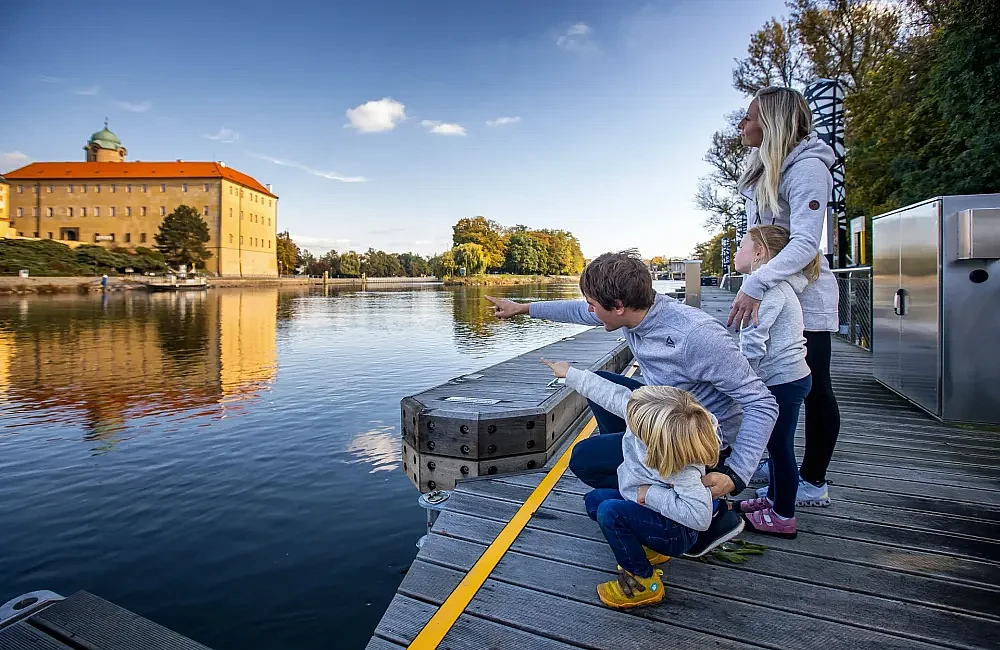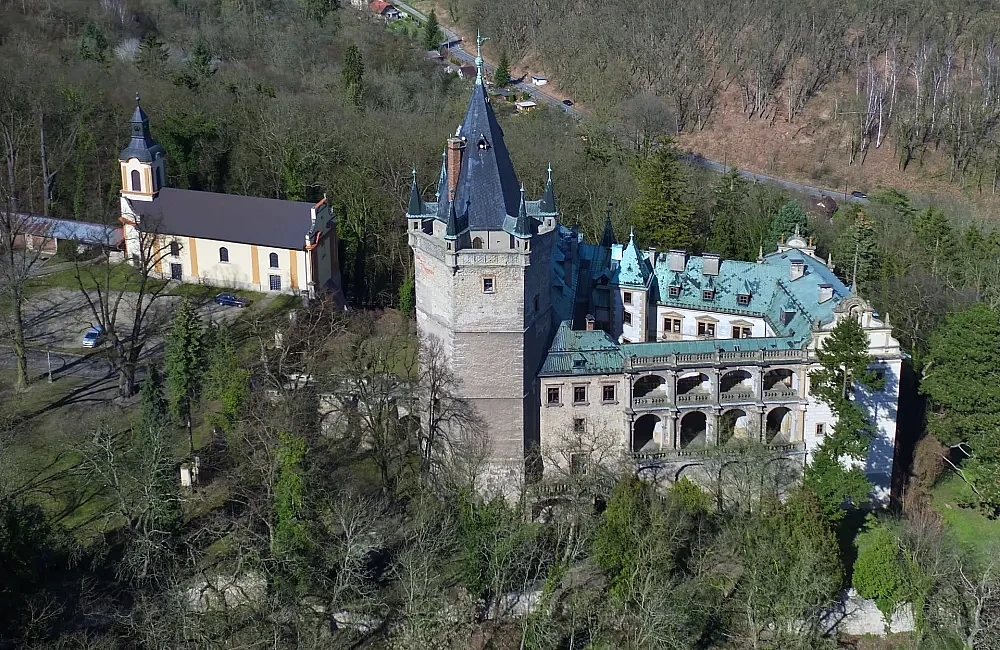Information
Construction of the Baroque château began in 1649. It was commissioned by August Pavel of Morzin and designed by the renowned architect Carlo Lurago. Over time, the building underwent several modifications. From the second half of the 17th century come the so-called Blue Rooms with rococo frescoes, as well as a grand Baroque stone hall decorated with a fresco by Václav Prokop Kramolín.
After World War II, the château was nationalized and sold to the municipality. Its premises were used by a school, an agricultural cooperative, the local museum, and later also by the National Museum, which housed an exhibition of keyboard instruments and an archive of slides and documents from the Czechoslovak Press Agency.
In 2006, the château, then in a state of disrepair, was sold by the state to a private owner, who began a gradual restoration and opened a basic guided tour to the public. Today, visitors can explore the reception hall, the Empire-style staircase with the Baroque stone hall, and the château chapel with its stucco decorations.
The exhibition, which presents the life of the nobility in the château, leads visitors through the kitchen prep room, the château dining room, and into the unique Blue Rooms. There is also a display of hunting trophies, and for those interested, an attic exhibition called “Old School”, showcasing a variety of historical artifacts.
Inside the château, you will also find the “Angel Retro Café”, offering a tempting selection of sweet and savory pastries, gourmet coffee and drinks, including regional beer.
The château is surrounded by a spacious English park, and it has become a popular venue for weddings, as well as a variety of cultural and social events.








